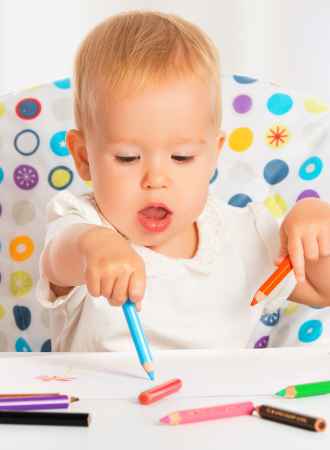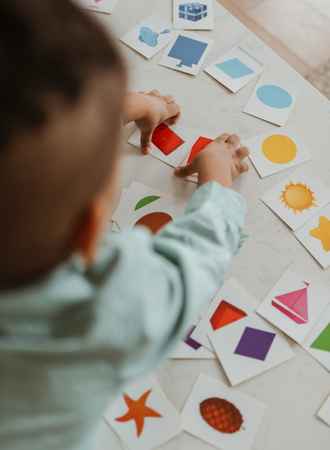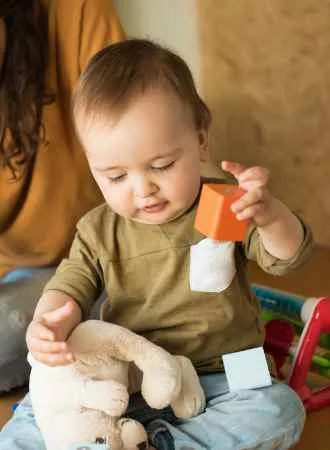Ever pondered how sensory play, a hands-on and interactive approach, can impact a child’s language development? You’re certainly not alone in this quest. Many caregivers and educators are keen to harness the potential benefits of sensory play for language growth.
Fortunately, sensory play, designed to stimulate a child’s senses, has demonstrated profound benefits in fostering communication skills and language expansion.
As an expert in child development and early learning strategies, I’ve curated a comprehensive guide that delves into the intricate relationship between sensory play experiences and language evolution.
Let’s journey through this exploration and uncover the transformative role of sensory play in nurturing and advancing language skills in children.
Sensory play can be a great way to help children develop language skills, and there are many different activities that parents and caregivers can do with their kids to support this development.
Sensory experiences can be an effective way to help kids develop language and social skills, as it promotes cognitive development, motor skills development and social-emotional growth.
Sensory toys can help children with sensory processing difficulties engage with their environment in a positive way.
Sensory play, which engages one or more of a child’s senses, plays a significant role in language development. Through sensory experiences, children can acquire vocabulary, improve listening skills, and enhance their overall communication abilities.
| Benefit | Description/Examples |
|---|---|
| Vocabulary Expansion | As children explore different textures, smells, tastes, sounds, and sights, they learn words to describe their experiences. For example, words like “slimy,” “gritty,” or “fragrant” can be introduced during sensory play. |
| Enhanced Listening Skills | Sensory activities that involve sounds, such as listening to nature sounds or musical instruments, help children discern different noises and understand related vocabulary like “chirping birds” or “rattling tambourine.” |
| Improved Sentence Structure | When children discuss their sensory experiences, they often form more complex sentences. For instance, “The sand feels rough on my hands” or “The bells sound so loud.” |
| Understanding Prepositions | Sensory play often involves actions that introduce prepositions like “in,” “on,” “under,” “between.” For example, burying toys in sand or placing objects inside containers. |
| Enhanced Descriptive Skills | Sensory experiences encourage children to describe in detail. They might discuss the color, size, texture, or function of objects they’re interacting with. |
| Better Comprehension | Engaging in sensory activities can help children better understand abstract concepts. For instance, experiencing “hot” and “cold” firsthand can make these ideas more tangible. |
| Development of Social Language | Shared sensory play experiences provide opportunities for children to practice turn-taking in conversations, ask questions, and respond to peers. |
| Understanding Cause and Effect | Sensory play can introduce phrases related to cause and effect, such as “When I mix blue and yellow, it becomes green.” |
| Enhanced Storytelling Abilities | Sensory experiences can serve as a basis for children to create and narrate stories, enriching their narrative skills. |
How Does Sensory Play Help Child’s Language Development?

Sensory play is an important part of child development, especially the language and speaking domains, helping babies and toddlers explore their environment, learn new words and follow commands.
Engaging in sensory activities help support early brain development in kids. Cognitive development is enhanced through sensory play, as kids are exposed to different objects and textures that help them understand the world around them.
Through this type of exploration, they can learn how to identify objects by sight or sound and make connections between these items. This helps build a foundation for later language skills such as reading comprehension, vocabulary building and the ability to use longer sentences and describing objects in more detail using action words based on sensory experience.
Motor skills development is also improved through sensory play. As kids manipulate various toys or materials, they develop fine motor control which will be essential when learning how to write letters or form words with pencils or crayons in the future.
Gross motor skills are developed when playing with larger items such as balls or bean bags that require more movement from the body than smaller objects do.
Social and emotional development is also promoted through sensory play activities, as it encourages kids to build sentences, initiate oral language or spoken language communication between peers who may have difficulty expressing themselves verbally due to age-related developmental delays or disabilities.
By providing opportunities for nonverbal interaction with others, children can practice social cues such as turn taking and sharing while developing relationships with those around them at the same time. One way to promote longer phrases in speech is by recasting or providing additional details to their existing phrases while you target speech sounds and overall expansion of utterances.
Engaging in sensory activities can help reduce stress levels in young learners who may find verbal communication difficult due to anxiety issues or other mental health concerns
What Are the Best Sensory Toys for Language Development?
Visual stimulation toys are an excellent way to promote language development in children. These types of toys can help kids learn words, colors, shapes, and more.
Examples of visual stimulation toys include flashcards with pictures or words on them, puzzles with colorful pieces that need to be put together in the correct order, and books with vivid illustrations. All of these activities can help kids learn new vocabulary while also developing their problem-solving skills.
Auditory stimulation toys are great for teaching language through sound. Music is a wonderful tool for helping young minds understand rhythm and melody as well as improving auditory processing skills which will benefit their overall language development.
Musical instruments such as drums or xylophones provide a fun way to explore different sounds and tones while singing songs helps teach pronunciation and intonation patterns which are important components of speaking any language correctly.
Tactile stimulation toys enable kids to explore their environment through touch, an essential part of learning how to communicate effectively. Textured blocks or balls that make noise when touched can help kids become familiar with certain objects by feeling them rather than just seeing them visually or hearing about them audibly.
Tactile play also encourages exploration, which increases curiosity about the world around us; a necessary component for successful communication.

Tips for Using Sensory Toys to Promote Language Development

Using sensory toys to promote language development in children is an effective way to help them learn and grow. Establishing routines and structures can provide a sense of security for the child, allowing them to explore their environment without feeling overwhelmed.
This could include setting aside specific times during the day for playtime with sensory toys or having designated areas where they can access these materials.
Encouraging exploration and experimentation with sensory toys is key when it comes to promoting language development. Allowing kids to interact with different textures, colors, shapes, sizes, and sounds will help them build vocabulary as well as understand concepts such as cause-and-effect relationships.
For example, if a child presses a button on a toy that makes music or lights up when pressed, they will begin to understand how certain actions produce results.
Modeling language use and conversation skills while playing with sensory toys is also important in helping kids develop their communication abilities. Parents should talk about what the child is doing while playing so that they become familiar with fun descriptive words and phrases associated with those activities.
Additionally, parents should ask questions about what the child has done or observed during playtime in order to encourage further discussion about their experiences.



